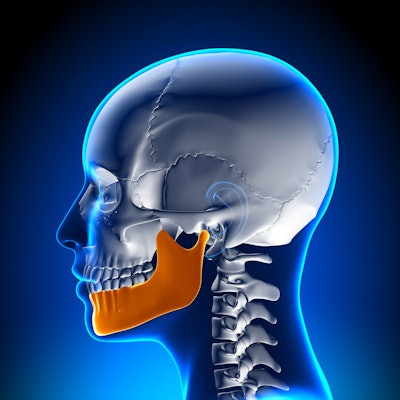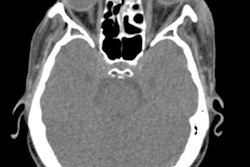
A woman spent 35 years with severe pain due to the placement of a temporomandibular joint (TMJ) prosthetic device, and her case illustrates why these implants were destined to be recalled in 1991, according to a perspective article published on September 27 in the Journal of Pain Research.
The woman is just one of the hundreds of patients -- predominantly young women -- who experienced chronic pain, dysfunction, and disability for decades after receiving Proplast-Teflon interpositional implants (PTIPIs) to treat temporomandibular joint pain, the authors wrote. The cases demonstrate failures at the federal, professional, and individual levels, the group added.
"This case represents one of hundreds of similar patients implanted with PTIPIs who were left with damage to their TMJ as well as complex chronic pain and its psychological effects," wrote the authors, led by Dr. David A. Keith of the department of oral and maxillofacial surgery at Massachusetts General Hospital.
Constant pain
Keith and colleagues detailed the story of a 55-year-old woman with a history of multiple TMJ surgeries who visited a clinic because she had limited mouth opening and trouble bringing her teeth together. In the 1980s, she underwent placement of bilateral Proplast-Teflon interpositional implants, followed by bilateral total joint replacement with TMJ prostheses and then removal of her right total joint prosthesis.
The implants led to worsened pain and the destruction and ankylosis of her TMJs, likely due to chronic inflammation caused by Proplast-Teflon particles that disintegrated within nearby tissues, the authors wrote.
While the procedure to relieve the ankylosis successfully improved her range of motion and her ability to speak and eat, her pain continued at the same intensity. Her persistent pain is believed to be due to peripheral and central neurological changes associated with chronic inflammation and nerve damage, along with the psychological consequences of the long-standing pain, they wrote.
Over the years, the woman has taken opioids and nonopioids, as well as undergone injection-based therapies, behavioral therapy, and neurosurgery with a trigeminal ganglion rhizotomy. Despite such treatments, she continues to experience severe pain in her head and neck.
The history
In 1968, biochemist Dr. Charles Homsy developed Proplast, a porous form of polytetrafluoroethylene (PTFE). Ultimately, he founded the company Vitek to develop, manufacture, and market implants, which were made with Proplast and Teflon, which is a dense form of PTFE. Teflon was added to provide a smooth gliding surface that the mandibular condyle could move along. However, there were warnings that Teflon should not be implanted in the body, and Proplast-Teflon material had previously been condemned for use in orthopedic patients, the authors wrote.
In 1983, Vitek notified the U.S. Food and Drug Administration (FDA) that it was planning to market the implant as a treatment for TMJ disorder. At the time, Vitek claimed that the implant was substantially equivalent to silicone sheeting, which was being used as a TMJ implant. Its biocompatibility was based on in vitro and alveolar ridge augmentation studies but no animal or biomechanical studies; however, the FDA allowed it to be marketed, the authors noted.
Initially, there were encouraging patient reports about the use of the TMJ implants. But soon after, there were reports of pain, imaging evidence of severe bone loss in the condyle and glenoid fossa, bite changes, limited jaw motion, joint noises, nausea, dizziness, ringing in the ears, and fragmentation and/or displacement of the implant, according to the authors.
Eventually, the FDA began inspecting the cases, and patients filed lawsuits against Vitek. In 1989, Vitek lost its first lawsuit, and a year later, the company filed for bankruptcy. Homsy, who fled the U.S. and now lives in Switzerland, has blamed oral and maxillofacial surgeons and patients for the failure of the implants. In 1991, the FDA seized existing implants and buried them in a landfill in Texas, Keith and colleagues wrote.
Finger-pointing
Who's to blame for the fiasco? Some have blamed the FDA. Because TMJ implants were regulated under the agency's 510(k) program, they were not subject to critical review for several years. At that time, the agency's inspection process also did not include a system to track implants, the authors wrote.
The FDA announced in June that it has revised its regulatory and surveillance process to require more rigorous proof of safety and efficacy of these devices in response to continued reports of adverse events associated with all types of TMJ implants.
The spotlight has also included the developers of the implant. They failed to recognize or acknowledge the unique features of the TMJ, as well as the evidence that the implant material would fail under loading forces in the joint. Additionally, professional organizations such as the American Association of Oral and Maxillofacial Surgeons (AAOMS) were slow to speak out and protect the public, the authors wrote.
Patient harm occurs when clinical and scientific research, standards of care, and the healthcare and regulatory environment that aim to improve surgical advances are ignored or diminished, they wrote.
The "TMJ PTIPI affair is an example that should not be forgotten," Keith and colleagues concluded.




















